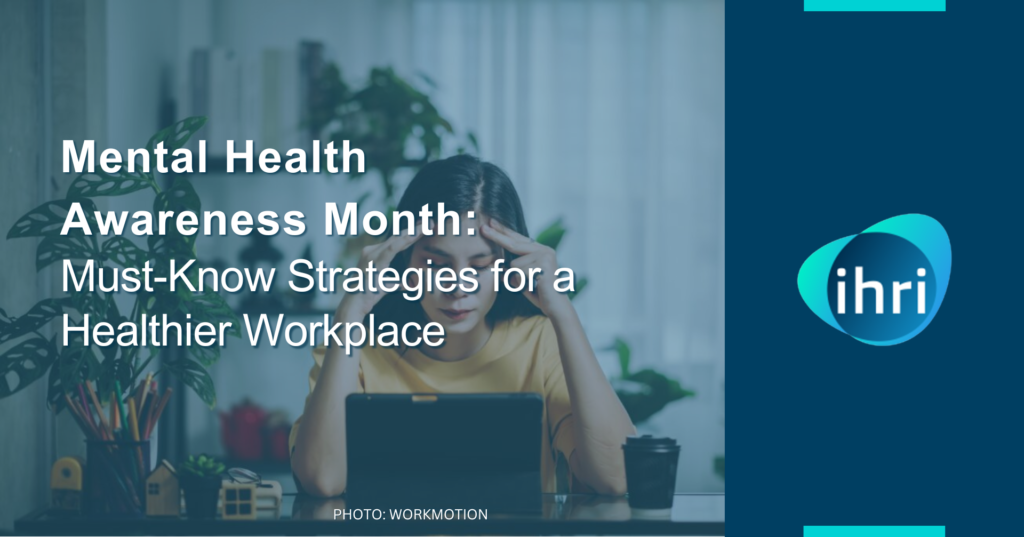As we enter September, recognized globally as Mental Health Awareness Month, it’s crucial for employers to take proactive steps in addressing the mental well-being of their employees. With the rising incidence of mental health issues in the workplace, particularly exacerbated by the aftermath of the COVID-19 pandemic, there has never been a more urgent time to implement comprehensive mental health programs. This blog will explore effective strategies for understanding common mental health issues among employees, implementing supportive programs, and providing actionable steps to help employees overcome these challenges.
Understanding the Scope of Mental Health Issues
Globally, mental health disorders are among the leading causes of disability, with anxiety and depression being the most common. According to the World Health Organization (WHO), approximately 1 in 8 people worldwide live with a mental health disorder, a statistic that has only worsened in the face of global crises like the COVID-19 pandemic. In Southeast Asia, mental health issues have reached alarming levels, with countries like the Philippines and Indonesia reporting significant increases in cases of depression and anxiety.
In the workplace, the impact of poor mental health is profound. The World Economic Forum estimates that mental health conditions cost the global economy $1 trillion each year in lost productivity. In Southeast Asia, these challenges are magnified by cultural stigmas, limited access to mental health care, and a lack of workplace initiatives addressing mental well-being.
Effective Strategies for Implementing Mental Health Programs
- Conducting a Mental Health Audit
Before implementing any program, it’s essential to understand the current state of mental health in your organization. A mental health audit can help identify prevalent issues, potential stressors, and existing gaps in support systems. This audit should include anonymous surveys, focus groups, and one-on-one interviews to gather comprehensive data. - Creating a Supportive Work Environment
A supportive work environment is foundational to any mental health initiative. This includes fostering a culture of openness where employees feel comfortable discussing mental health issues without fear of stigma. Leaders should lead by example, openly discussing mental health and encouraging their teams to do the same. - Offering Employee Assistance Programs (EAPs)
Employee Assistance Programs (EAPs) provide employees with confidential counseling services to address personal or work-related issues. These programs should be easily accessible, with employees regularly reminded of the available resources. In Southeast Asia, where access to mental health care can be limited, EAPs can play a critical role in providing much-needed support. - Providing Mental Health Training for Managers
Managers are often the first line of defense in recognizing and addressing mental health issues within their teams. Providing training on how to identify signs of mental distress and how to offer support is essential. This training should also include strategies for maintaining their mental well-being, as managers often bear the brunt of workplace stress. - Promoting Work-Life Balance
Encouraging work-life balance is crucial for preventing burnout and maintaining mental health. This can include offering flexible working hours, promoting the use of paid time off, and encouraging employees to disconnect after work hours. In Southeast Asia, where long working hours are the norm, promoting work-life balance can be particularly challenging but also highly impactful. - Implementing Regular Mental Health Check-ins
Regular mental health check-ins, whether through surveys or one-on-one meetings, can help keep a pulse on employee well-being. These check-ins should be designed to identify any emerging issues early and offer support before problems escalate. - Promoting Physical Health to Boost Mental Health
Physical and mental health are closely linked. Encouraging physical activity, whether through company-sponsored fitness programs or promoting active breaks during the workday, can have a positive impact on mental well-being.
Global and Southeast Asian Mental Health Data: A Wake-up Call
- According to a 2023 report by WHO, the prevalence of anxiety disorders in Southeast Asia is higher than the global average, with 5% of the population affected compared to the global average of 3.6%.
- A study published in The Lancet in 2022 revealed that the Philippines experienced a 35% increase in depression cases between 2019 and 2021, largely attributed to the pandemic.
- In Malaysia, the Ministry of Health reported a 50% increase in calls to mental health hotlines during the height of the pandemic, highlighting the urgent need for more robust mental health support systems.
Connecting to Current Events: The Silent Pandemic of Mental Health
As the world continues to grapple with the long-term effects of the COVID-19 pandemic, mental health issues have surged to the forefront of public concern. In Southeast Asia, this “silent pandemic” has had a profound impact on both individuals and economies. In the Philippines, recent government initiatives aim to address mental health in the workplace, making September an opportune time for employers to align their strategies with national efforts.
Conclusion
Mental Health Awareness Month is not just a time for reflection but for action. By understanding the common mental health issues employees face and implementing effective programs, employers can create a supportive environment that promotes well-being and productivity. As we move forward in a post-pandemic world, these strategies will not only help employees overcome mental health challenges but also build a resilient and thriving workforce. Don’t wait until it’s too late—start making mental health a priority in your workplace today.
Becoming an Expert
International HR Institute provides global certification programs for modern-day HR professionals. Understand how you can create and maintain a resilient workplace by taking the Certified Compensation and Benefits Professional certification program.


